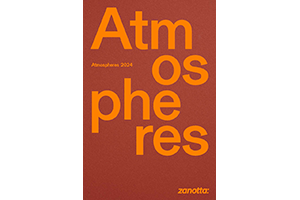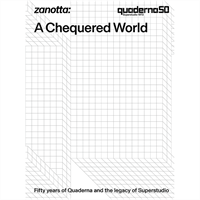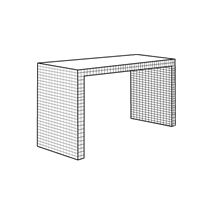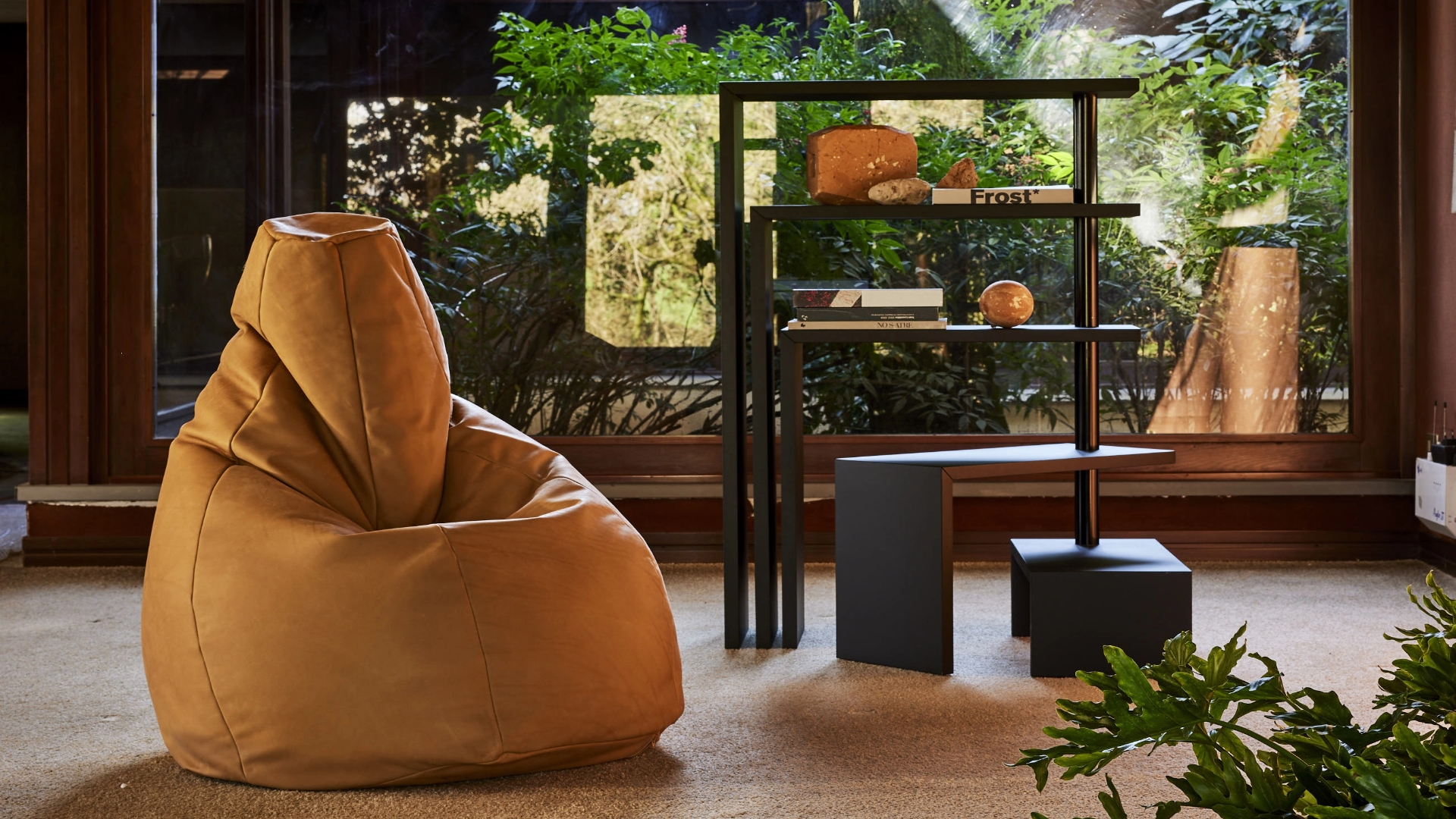Desk. Honeycomb core structure coated with white Print laminate, digitally printed with black squares at 3 cm spacing. The top hides a retractable pull-out drawer, with a drawer compartment in black scratch-resistant embossed painted wood.
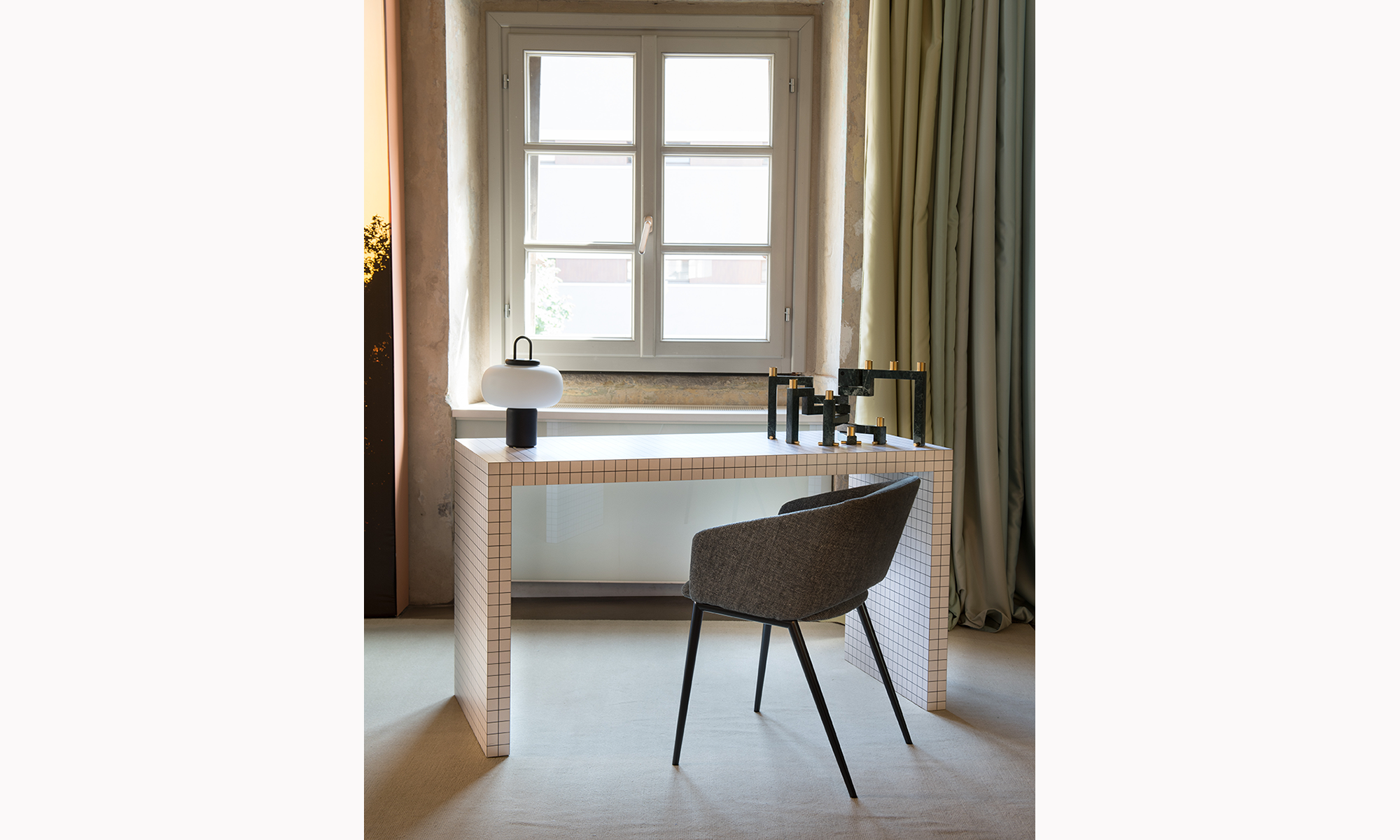
.png)
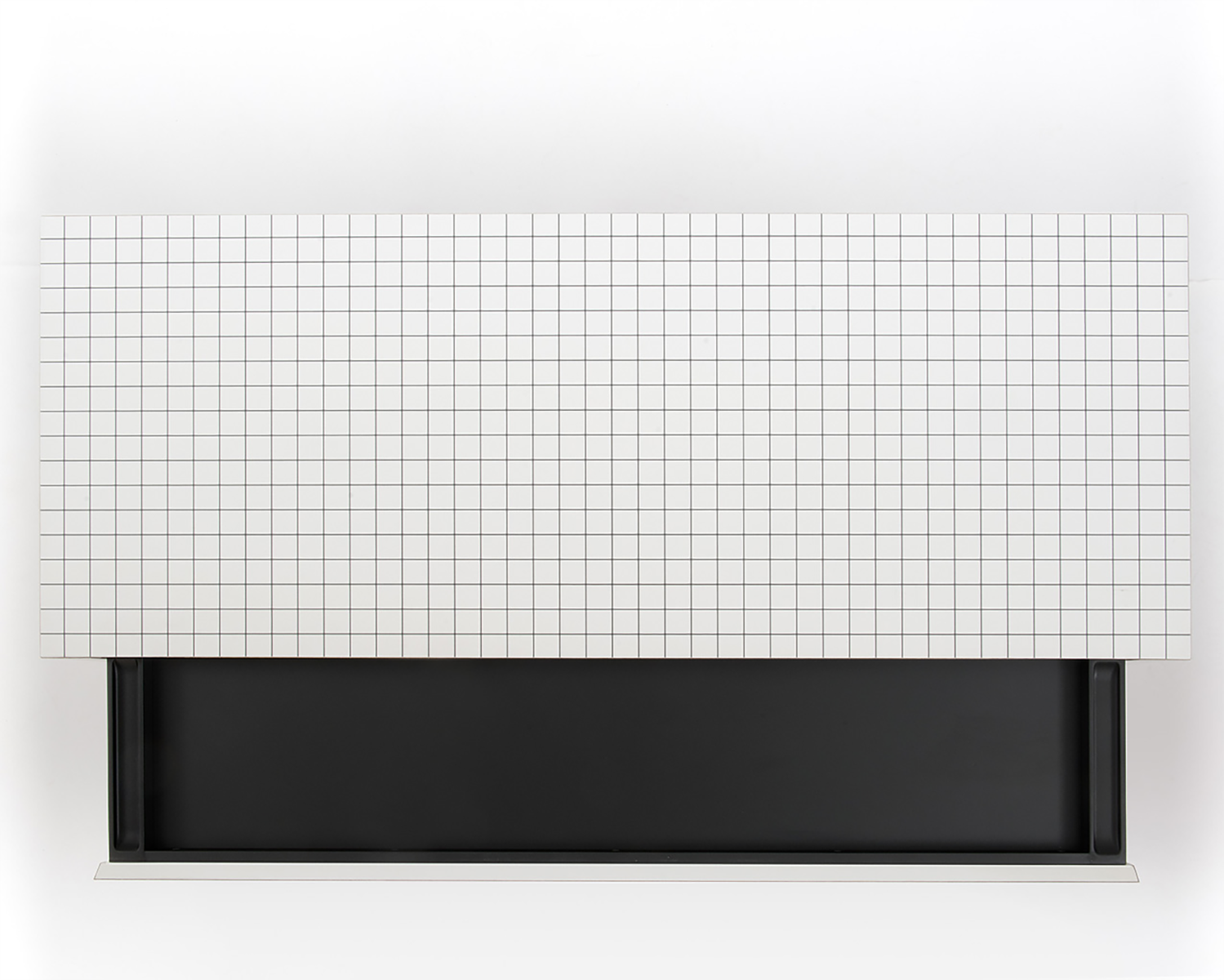
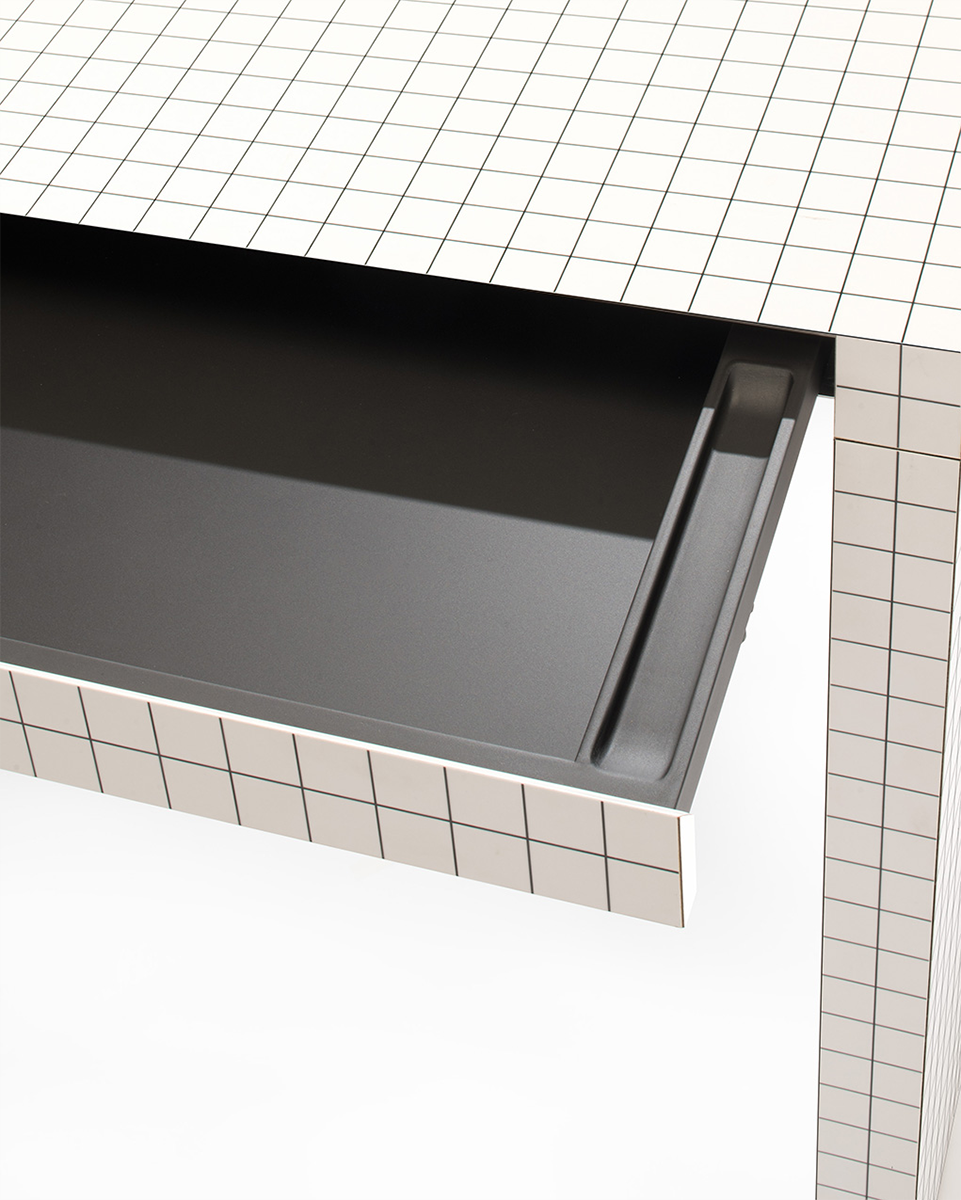
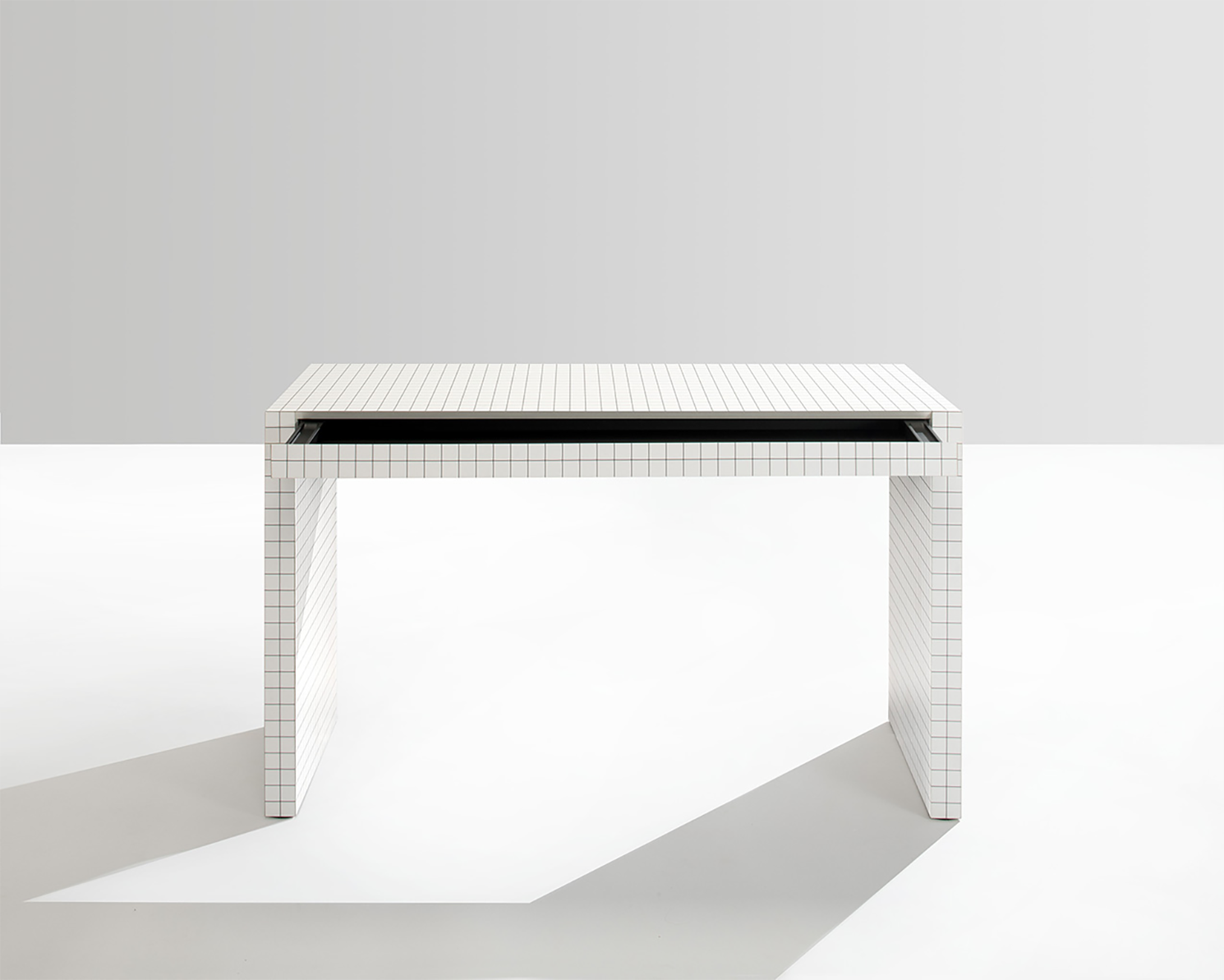
.png)
The Seventies were years of transition and rethinking, but also of visionary utopia which revolutionised parameters, thinking, styles and perspectives. With it's story, Quaderna represents the utopia of those years. The radical movement attempts to "gobeyond the disciplinary aspect of design, that is to say the re-composition of contradictions at formal level, destroying... the usual image of the product"1. The result is a vanguard style which provokes, on the one hand, and creates stimuli for the contemporary world, on the other. “Radical design” openly confuted not just the status of design, but the entire social context in which designers worked. An explicit criticism of the rigid and dogmatic functionalism of the academy, against which the movement wished to be seen as a liberating vision of life and design.
.png)
.png)

